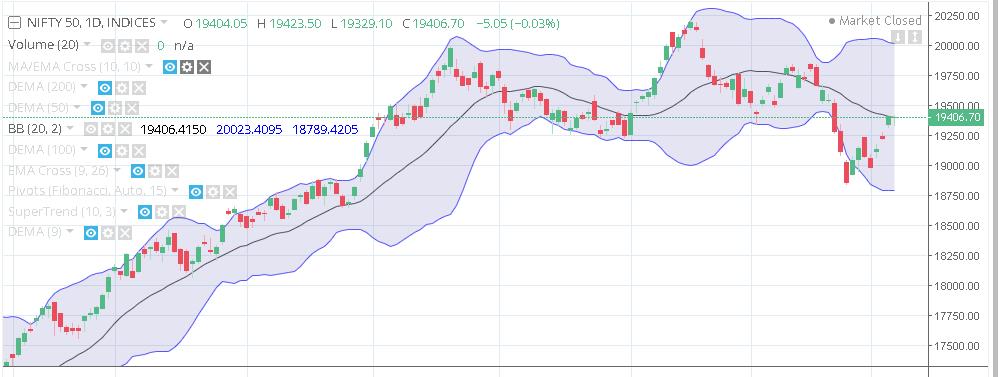In the world of trading, the ability to pinpoint the ideal entry and exit points is the cornerstone of success. The Bollinger Bands indicator is a versatile tool that traders often rely on to gain insights into potential trade opportunities. In this comprehensive guide, we will dive deep into the art of leveraging the Bollinger Bands effectively to extract entry and exit price points with precision and confidence.
1. Unraveling the Power of Bollinger Bands
Bollinger Bands, Volatility Indicator, Trading Tool
Bollinger Bands are a widely-used technical indicator that helps traders gauge market volatility and identify potential turning points. They consist of a middle band (usually a 20-period simple moving average) and upper and lower bands that represent standard deviations from the middle band.

2. Choosing the Right Bollinger Bands Parameters
Bollinger Bands Parameters, Indicator Settings, Customization
To use Bollinger Bands effectively, it’s essential to select the right parameters. The standard settings include a 20-period simple moving average and two standard deviations for the upper and lower bands. Customizing these settings to match your trading strategy and timeframe is crucial.


3. Mastering Entry Points with Bollinger Bands
Entry Points, Trading Signals, Bollinger Bands Squeezes and Expansions
Effective entry points are the core of profitable trades. Here’s how to use Bollinger Bands to identify entry opportunities:
- Bollinger Bands Squeeze: When the Bollinger Bands contract, indicating low volatility, it often precedes a significant price movement. Traders can take advantage of this by entering a trade when the bands are tightly squeezed and then start expanding, signaling a potential price breakout.
- Price and Bollinger Bands Confluence: Look for confluence between the asset’s price and the Bollinger Bands. When the price touches or approaches the lower band and starts to bounce, it may serve as an entry point for a long trade. Conversely, when the price reaches or touches the upper band and reverses, it may signal an entry for a short trade.
- Bollinger Bands Breakout: Another common entry strategy is to trade breakouts. When the price breaks above the upper band, it can indicate a potential entry for a long trade. Conversely, when the price breaks below the lower band, it may signal a short entry.
4. Navigating Exit Points with Bollinger Bands
Keywords: Exit Points, Profit Booking, Bollinger Bands Reversals
Effective exit points are crucial for locking in profits and managing risk:
- Bollinger Bands Expansion Reversal: To identify exit points, observe the Bollinger Bands as they start to contract after a period of expansion. This contraction may indicate a potential price reversal, prompting an exit.
- Price and Bollinger Bands Divergence: Pay attention to the price’s divergence from the Bollinger Bands. When the price significantly diverges from the bands, it may signal a potential exit point. For instance, if you’re in a long trade and the price moves significantly above the upper band, it may suggest that the trend is overextended, potentially prompting an exit.
- Using Other Technical Indicators: Consider using the Bollinger Bands in conjunction with other technical indicators or chart patterns to validate exit points. If the Bollinger Bands suggest an overbought condition but a bearish reversal pattern appears on the price chart, it can provide a strong signal to exit a long trade or enter a short trade.
5. Combining Bollinger Bands with Other Indicators
Indicator Combinations, Trading Strategy, Precision
While Bollinger Bands are powerful on their own, combining them with other technical indicators can enhance the precision of your entry and exit points. Develop a well-rounded trading strategy by integrating various technical indicators that complement each other.
6. Practice, Backtesting, and Risk Management
Trading Practice, Backtesting, Risk Management
Before implementing your Bollinger Bands-based strategies in live trading, practice on historical data and backtest your approaches. Protect your capital by implementing risk management measures, like setting stop-loss and take-profit levels.
Conclusion: Sailing the Seas of Trading with Bollinger Bands
Trading Success, Bollinger Bands Mastery, Effective Trading Strategies
Mastering the art of extracting entry and exit points with Bollinger Bands is a journey that combines knowledge, practice, and a deep understanding of market dynamics. By selecting the right parameters, fine-tuning your strategies, and applying risk management principles, you can confidently navigate the world of trading and extract entry and exit price points with precision. Happy trading!
